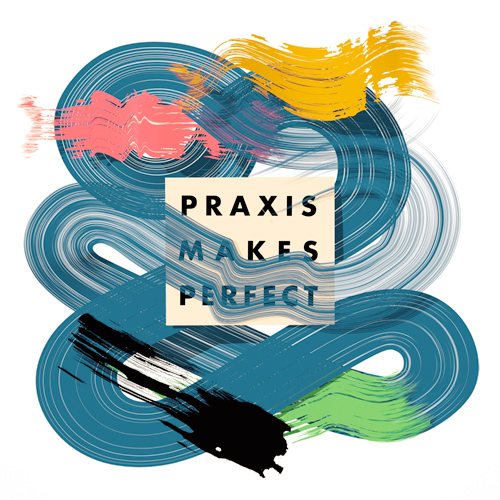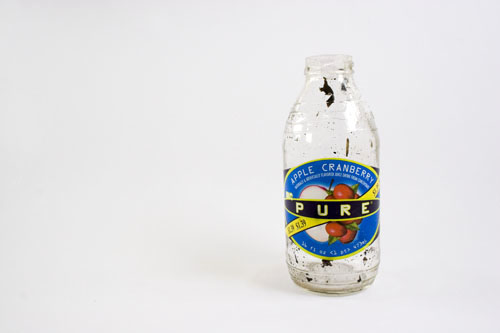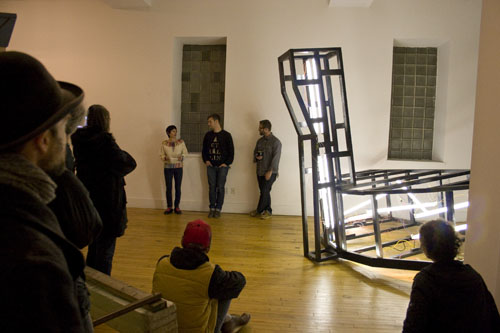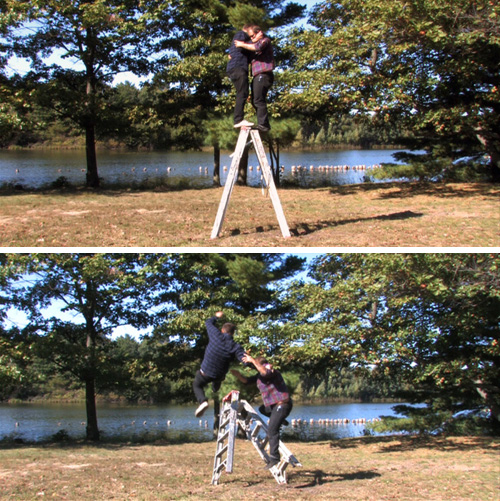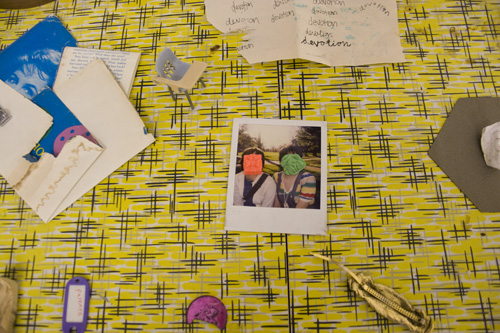This week I found myself sitting in the cab of an old Chevy pickup truck, gathering an odd assortment of objects: yellow BB pellets, cheese danish wrappers, rachet straps, empty bottles. Taking my non-precious cargo to the studio, I carefully photographed and cataloged each object. Creating this archive in consideration of a future project, I aimed to dissect the circumstances related to this particular intersection of items gathered, lost and found.
The action was inspired by a recent series of strange and unexpected events. During a trip back to Chicago to deinstall my last show, the work was placed in a truck that was subsequently stolen that same evening. Miraculously, the truck was recovered days later with minimal damage and most of its contents intact. The glaring exception was my work, which disappeared without a trace. In exchange, the thieves left behind a puzzling collection of their own residual effects.
All of this happened in the midst of a collaborative project in Detroit, where I’d been working with artist Nate Tonning on a series of videos for an upcoming installation. Visiting a local bazaar days before, I’d been drawn to a quarter-fueled grab tank offering up a sea of prize-filled plastic globes. I was hooked by the design of the simple phrase prominently displayed on the glass: Game Not Over Until You Win. In light of the events that would unfold days later, this mantra would become increasingly comedic in its irony.
In retrospect, the irony fades as I am impressed by the resonance of this phrase. Sticking it out and digging in, we found depth and honesty in the place where things started to crack and our original system was thrown into question. It brought me back to Mira Schor’s seminal essay On Failure and Anonymity, which presents her idea of real success in negotiating the uncertainties of an artist’s life:
“To survive the long run, to continue to function, someone ought to tell you that there is a long run. To survive, it is necessary to stand for something within yourself and yet always doubt your own deepest beliefs. It is necessary to have the agglomeration of terrors and hopes, delights and doubts that make up a soul.”
Coming our of our respective MFA programs, many graduates hold on to older values and romantic scenarios of high art and the contemporary art market. As the true needs and challenges of our existence as artists are revealed, the life of the work and the studio process resurface as sustaining forces for the vast majority. In my own experience, I’ve recently struggled with the frustration of pieces lost and the time I’d invested in them. This instigated a short period of intense criticality as I questioned the viability of other projects and my work in general. Then I figured it best to just suck it up and get on with it. Despite the absence of certain objects, the process of their creation remains imbedded in my practice. With a shift in perspective, these very struggles become avenues for exploration and a means of deepening the work.
So there we were, left without wheels in Chicago. Plan B was quickly negotiated and we piled into the back seat of a rental car headed east. We’d caught a ride with Jonas Sebura and Alex Gartelmann, two artists coming over for a gallery talk scheduled that evening in Detroit. They met while in graduate school at The School of the Art Institute of Chicago, and have been working as the collaborative team Sebura&Gartelmann since 2010.
Artist Melanie Manos moderated their talk at 2739 Edwin, scheduled concurrently with the closing night of their exhibition “Drifting Towards Consequence.” In this collection of works, Sebura&Gartelmann explore fundamental aspects of human relationships through the construction of perfect, but slightly odd, vernacular architecture and absurd actions that test the boundaries of their mutual trust.
When Manos asked about their approach, the artists emphasized the importance of process in their practice. Taking it a step further, they defined process as the practice. In performing actions that test the physical limits of the structures they create and/or animate, there is an implied element of failure. Committing to this process together, they record its very unfolding and see it through to the other side.
In her essay, Mira Schor argues that “Real failure comes to those who accept their status quo, who do not press against their limitations. Only the persistence of dissatisfaction and struggle ensure a true form of success in the life of the artist.” When considered in this context, the work of artists such as Sebura&Gartelmann finds fertile ground, exploring failure as concept with liberating results.
Between these two subjective poles of success and failure lies a space of both great confusion and great potential for artists. What constitutes each? Perhaps neither is defined by what we thought, and what we wanted turned out to be quite different than what we really need. As I consider the events which have occurred in the past year and the surprising places it has taken me, one thing that remains constant throughout is the sincerity of the pursuit. As Schor states, it is the ability to stand for something inside of ourselves despite our own doubts. It is the commitment to keep showing up, and let the process reveal itself.
Watching an interview about Sebura&Gartelmann’s 2011 project, Both/And, at the Urban Institute for Contemporary Art (UICA) in Grand Rapids, I was also struck by the genuine nature of their approach. In speaking about the work, Alex Gartelmann emphasizes the importance of both generosity and sincerity in being able to maintain a studio practice, exchange ideas about work with other artists, and honestly approach what it is that you want to do.
Attending the MDW Fair in Chicago last month, I saw these same qualities exemplified on a larger scale –coming alive in the second floor of a huge warehouse filled with temporary gallery spaces and a dizzying network of artists funneling through its hallways. As a review in the Chicago Tribute stated, “MDW turns out to be a very special, and very odd, kind of art fair” that is celebrated as the brainchild of Roots & Culture, threewalls, Document and the Public Media Institute. Amidst this gathering of 75 or so artist-run spaces, I was both overwhelmed and charged by the sea of familiar and new faces, the undulating flow of work, and the bag of popcorn I was washing down with a glass of champagne.
When compared with more traditional art fairs and the art market game, it’s safe to say that the MDW Fair is not dealing in the cash and flash prevalent at massive productions like last weekend’s Art Basel in Miami. As I experienced it, the MDW fair is more for artists than for collectors, more for networking and experimentation than for sales. Yet, by no means is it less valuable. Both models are valuable in their own right, but as I return to the question of what constitutes success, for me it is epitomized by the sincerity and generosity I’ve encountered in communities such as this. I am reminded of that grab tank, filled with the brightly-colored globes.
Looking at these recent events and the rest of the year in review, I consider all that has been gathered, lost and found in these experiences. The resulting collection bears a likeness to that which I catalogued in the old Chevy pickup: a fair amount of the mundane, a surprising collection of useful tools, some wooden blocks, a cute black top, and enough change for a good americano. Absence is noted, but thankfully countered by unexpected gems discovered in the glove box.
There are also straps and cords. Plenty of them. Rachet straps, extension cords, electrical cords. With the coming of a new year and more projects and travels on the horizon, these objects serve as a fitting metaphor for the process of continuing to piece and hold it together. There will be dissatisfaction and struggle, as Mira Schor argued there must be, but there will also be art that is very much alive.
The greatest lesson in this: it’s all part of the long run.

